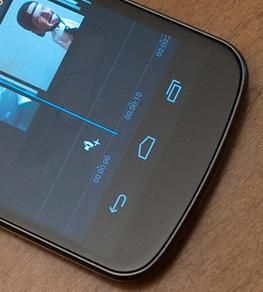If you've used an Android-powered smartphone or tablet for any length of time you've probably run into more than one instance where the "back" button didn't do what you were expecting it to.
Sometimes the back button hides the keyboard, sometimes it takes you to the previous app or back to the desktop, and sometimes it navigates you back to previous screens in an app. Before we dive into how the back button works today, let's review a little history.
Looking Back at Buttons
Long ago — okay, maybe it wasn't that long ago — Android's had physical buttons on them. Usually there were four, unless you count the roller-ball or track-pad: Home, Back, Menu, and Search. Each button had a clear purpose, except the back button.
As time marched on those physical buttons were replaced with capacitive "soft buttons", which were less expensive to produce and gave a cleaner look to the phone. Some of them were painted on, others were "invisible" until you needed them, which didn't work out so well. More recently we've seen on-screen "soft buttons" that occupy space on the screen, but they are visible when the screen does, can be modified, can change location based on the orientation of the phone, and even "dim" when you don't need them.
Today we have a combination of all three on current phones, but they're shifting to capacitive buttons and on-screen buttons rather than physical buttons. Tablets have generally always had on-screen buttons. When Android tablets powered by Honeycomb came out we really got to see what this new "onscreen soft button" could do for us, though the button bar consumed a lot of space on these bigger-screened devices. When you needed to input text, the onscreen keyboard would pop up and your back-button changed into a down-pointing chevron, providing a visual cue that pressing this button would hide the keyboard. Disappointingly this behavior is not consistent across Android 4.0 devices, which mostly prefer to keep the traditional back arrow.
Today the back button is supposed to provide a unified experience across the device, but it doesn't. Say you've been surfing the web and your notification bar tells you about a new message, so you open the mail and begin to read it. It's got a hyperlink in it, so you follow it which opens your web browser and takes you to the destination. You log in to the site, get the information you need, then press the back button to get back to your email app.
Pressing the back button the first time should take you to the login screen, pressing again should take you back to your email client. Instead it will generally take you to the previous web page you had open, functioning like the back button in your laptop's web browser. Argh! Keep pressing the back button long enough and eventually you'll be taken back to the desktop, not back to your email client.
To make matters worse, many Ice Cream Sandwich style apps include a "back" chevron in the upper-left corner of their screen, which takes you "back" inside the app. So now we have two back buttons! Great.
The back button should hide the keyboard if it's open. The back button should serve to take you to the previous screen that you had open, even if it's a different app.
So, why don't you use the back button correctly? It's not your fault. The poor little back button is trying to do too much, which is causing confusion and inconsistent behavior.

